The 7 levels of brand engagement
How to level up your brand from a commodity to a trusted, stand-out brand in the category.
We often talk about ‘brand’ in a very linear way, either you ‘have it’ or you don’t. From what I have learned, there are several ‘levels’ in between that have their own benefits, risks, and strategies.
Before we dive into the different levels and how to achieve them, here are a few disclaimers:
Higher levels don’t always mean more revenue or profit. It just means you command more ‘brand engagement’, to some extent that often translates into buying behavior and pricing power, but not always profitability. Many brands are doing great with low-to-no engagement and are making millions in the process.
These levels are fluid. Some brands have an atypical path or a specific industry where things work differently. I tried to look at examples from different industries for each and tried to make the framework work as broadly as possible, but with all frameworks, it’s just that.
As you can see in the overview, level 0 is basically ‘no brand’. From there on out we gradually add layers of distinctiveness, distribution, storytelling, and activation to make the brand more well-known and available. A few important notes about the levels:
Each level is a stepping stone for the next one. You can’t reach fame if you are not distinctive, you can’t be distinctive if you don’t have the right assets in place, etc…
It takes time and money to reach new levels: you can’t go from being an unknown brand to being top-of-mind in the category for all buyers in a few months (unless you’re a viral machine or throwing money out of the window).
Brands can evolve over time: you can start as a community-oriented brand initially to build some traction, then become an entertainment brand, and finally, a brand that wants to become a market leader by focusing on pure salience.
Levels can be exit points: you might want to build a visually distinctive brand and focus on maximizing salience + distribution without becoming a lifestyle brand or generating fandom. That’s totally the right strategy for some companies.
Are you ready to start the game? Buckle up and let’s get started!
Level 0: No branding
At level zero, things are simple. You don’t have a brand, and you’re not recognizable.
There is nothing wrong with this; very often, it’s because you’re offered as a public service or just part of a bigger whole. In some cases, the lack of brand is made up by the trust of the parent brand. For example, you still trust a water fountain because the city put it there. Or you’re plucking berries from nature, and you trust… well... nature.
Level 1: Blanding in
In this case, you have some basic brand elements like a name, logo, etc… However, it is done to blend in and signal: “cheap option here.” A great example is ‘white-label’ products in a retail environment. Another example is most B2B brands.
How to achieve this?
Distribution here is everything, of course, being present at the right buying moments will get people buying your stuff, regardless of any brand identity or differentiation. Remember that disgusting coffee you bought in the hospital? Yuk? Yes, but at least it was there!
Mostly, you’re trying to blend in with the category, making sure people understand what you are straight away. Study the category codes and make sure act accordingly so people understand straight away what you are.
Level 2: Hey, I’m here!
Ah, things are getting a bit more interesting. At this level, people can often distinguish you from the ‘cheapest’ options because you offer a slightly better option with a slightly more defined look: more professional, more premium, more artisanal, …
In a lot of cases, we see certain subcategories in a category that have a distinct look, for example, premium olive oils all have a similar style, but you can easily recognize them from the standard, cheap olive oils. Another example here is ‘natural skincare’ brands, they all look the same as a subcategory, but they are distinguishable from the category as a whole.
How to achieve this?
The same starting point as level 1, make sure you understand the category and its codes. Make sure you understand category entry points (CEP’s) so you know when/why and how people are buying, this will help you develop a brand tailored to those specific occasions. When starting out, it’s often better to focus on a limited amount of CEP’s.
Based on that, develop a brand identity that speaks to specific buying occasions
Having a solid ‘value proposition’ can help when people are considering you to make them understand what you’re all about and why you’re maybe slightly more expensive
Make sure you are highly visible at the bottom of the funnel, through sales activation.
Level 3: Stand-out
Welcome to the realm of distinctiveness. In this scenario, you stand out from the crowd, you are uniquely you. People can easily pick you up from the shelf and they are interested and intrigued because of your unique form factor, storytelling, and visual assets. Of course, people still buy other brands, but at least they’ll spot you in a crowded space or when they are primed (through ads for example).
A great example here was Klarna in its early days, which with its unique advertising style really stood out in the fintech space. It made me try them when I got a social ad later down the line.
How to achieve this?
Here, instead of going with the category codes, it’s time to start flipping them. Everyone is using gradients? Do something else. Everyone is using sans-serif logotype? Create a strong symbol. If everyone is using plastic bottles, use a can.
Very often to do this, you need some leap of creativity, something that doesn’t seem to make sense, like the Geico Gecko. This is where you often see companies that are ‘brand-lead’ thrive
Start exploring the realm of distinctive brand assets, focusing on the most memorable assets like characters, logo’s & sound.
Don’t over-obsess about meaning or purpose, you can be purely visually distinctive and build a strong presence.
Build a strong presence close to buying situations (often a sales team in B2B) and advertise on affordable channels (often performance marketing oriented) to prime your audience.
Read Jenni Romaniuk’s ‘Building distinctive brand assets’ and Byron Sharp’s ‘how brands grow’ to make sure you understand the dynamics at play.
Level 4: Brand-building
So far, we’ve mostly focussed on brands that are being recognized close to the point of sale or to an ‘in-market’ audience. At this level, things are changing, you’re no longer just marketing to people who need you, you’re marketing to your future audiences (learn more about the 95/5 rule here).

 Tiktok failed to load.
Tiktok failed to load.Enable 3rd party cookies or use another browser
Duolingo is a great example of a brand that is doing it differently in the market. They have a mascot, they create very entertaining content and ads.
How to achieve this?
Build a new layer on top of your ‘bottom-of-funnel’ that focuses on highly creative content that captures the attention.
Look into humor and entertainment as a means to get attention in the category. Learn about entertainment brands.
Try new, more qualitative broad-reach channels to grab more qualitative attention (e.g. Events, digital TV, OOH, …).
Hire creative people in-house or work with agencies that know how to build stand-out creative.
Start building a basic understanding of your brand investment through KPI’s like branded traffic or share of search.
Focus on owning a few strong category entry points and double down on them.
Read Paul Feldwick. Just do it.
Level 5: Salience
Finally, people are aware of you; on some occasions, you’re one of the first to come to mind. That’s great because it means your future cash flow is looking great. It also costs you a lot less to acquire new customers because people already know your brand.
When I think of having a strong beer, I think of Omer. They are highly visible on TV, and OOH, they are available and visible in almost all bars and retail stores. I started trying it first in a bar and finally also started buying it for a beer at home.
How to achieve this?
Keep expanding reach and frequency across the full funnel, and leverage high-quality channels (TV, OOH, …) to build mental availability.
Expand your range of category entry points and promote accordingly. E.g. Mc Donald’s moving into the breakfast space.
Stay super cohesive and leverage your distinctive assets to the max in any channel.
Maximize distribution and remove any friction to convert salience into purchases
Level 6: Lifestyle
While being top of mind is great, there is a certain crop of brands that goes beyond just mere salience, they add to a certain type of identity or lifestyle. They make you feel something, even special at specific moments.
Hoka shoes are not just running shoes, they are about the running lifestyle. I started seeing them pop up at running events (through sponsorship), in reviews, and finally in ads. I got intrigued by them and finally bought into the idea.
How to achieve this?
Tap into the lifestyle of the consumer and project it throughout all your touchpoints
Have a strong, authentic story to tell of why you show up
Be present in the right places and channels that represent that lifestyle
+ Don’t forget about all the fundamentals: Distinctiveness, creativity, brand-building, …
Level 7: Fandom
Aaaaah, the holy grail… right? Well, for most brands it’s unachievable. Even unwantable. As we know from marketing science, for most people, brands are very light forces. Most buyers are ‘light buyers’, they occasionally and from different brands.
Should you avoid pursuing it? Well, there are exceptions to the rule. Even though the Ehrenberg-bass laws are often described as ‘laws of physics’, they are still descriptive (they show what happens in the aggregate, over time), not prescriptive.
You might not want to ‘grow’ your brand indefinitely, you might want to lean on word of mouth as a cheaper channel, or you might have a truly unique product that people are excited about.
For example: Rapha is a brand that focuses on building a community around cycling.
How to achieve this?
Well, there is not a single playbook. But a big part of these types of brands is the community aspect, the fact that you see other people being excited about the same thing creates a bond. So focus on bringing people together, focus on a strong, authentic story that doesn’t feel like pure advertising.
If you are interested in exploring this route, check out Zoe Scaman’s work on Multiplayer brands and fandom.
I hope this journey through different levels of brand engagement was interesting for you. If there is one thing I hope you can take away from it is that there is a lot more options to build a brand in between being a ‘commodity’ and a ‘differentiated’ brand.






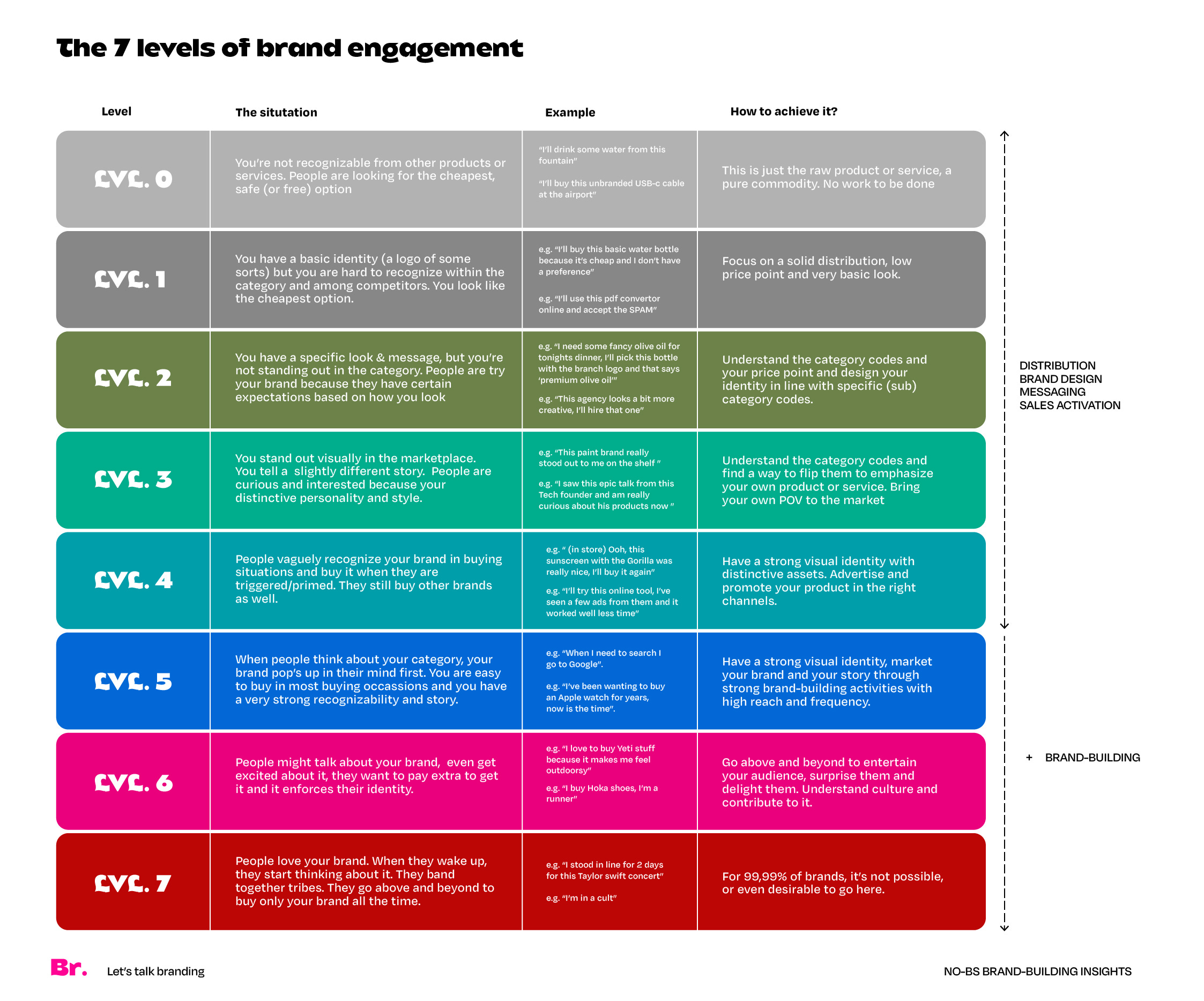
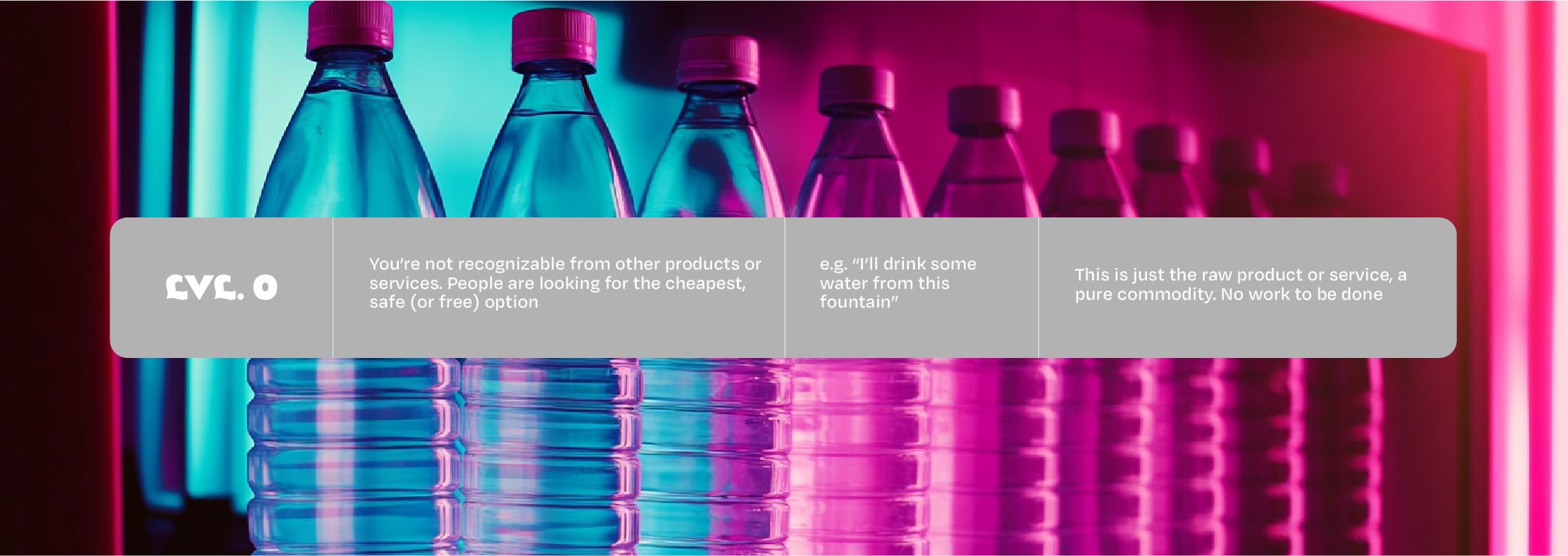

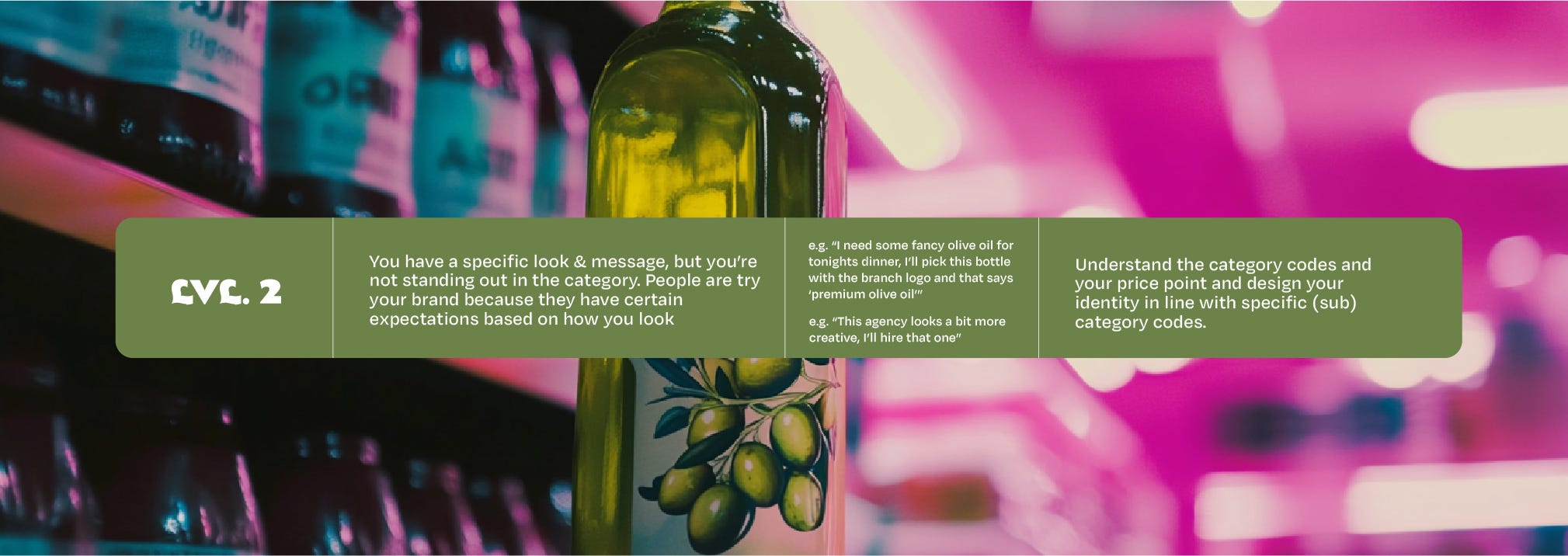

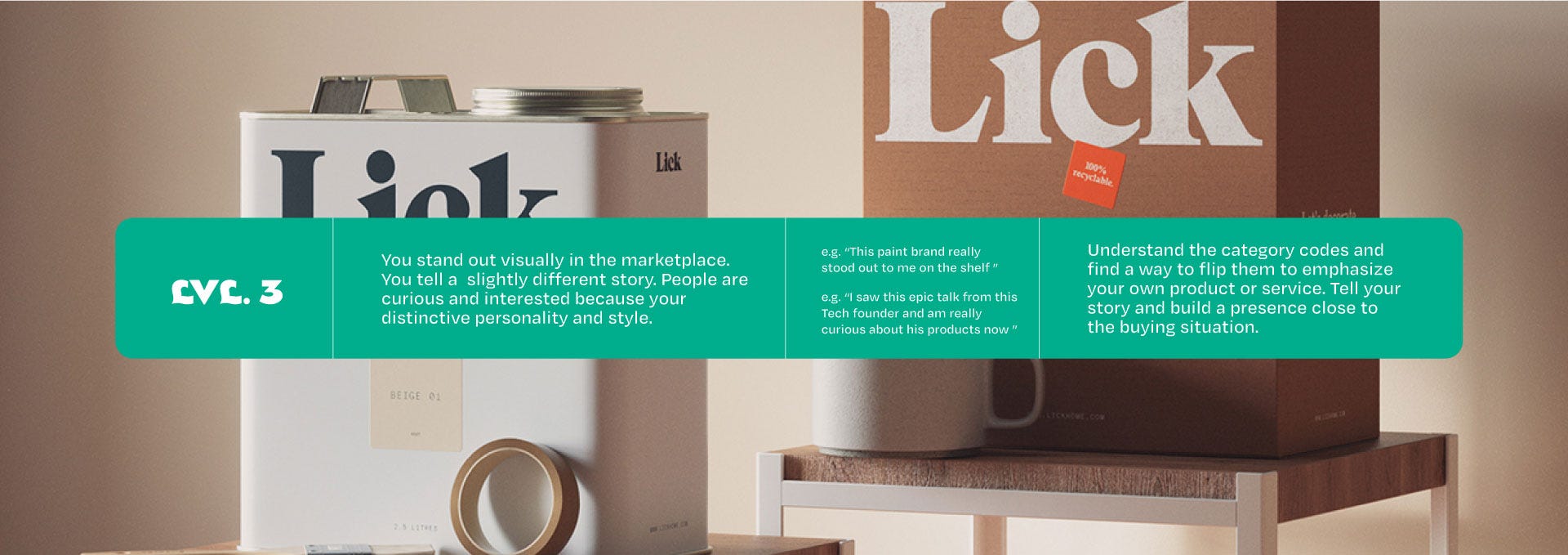
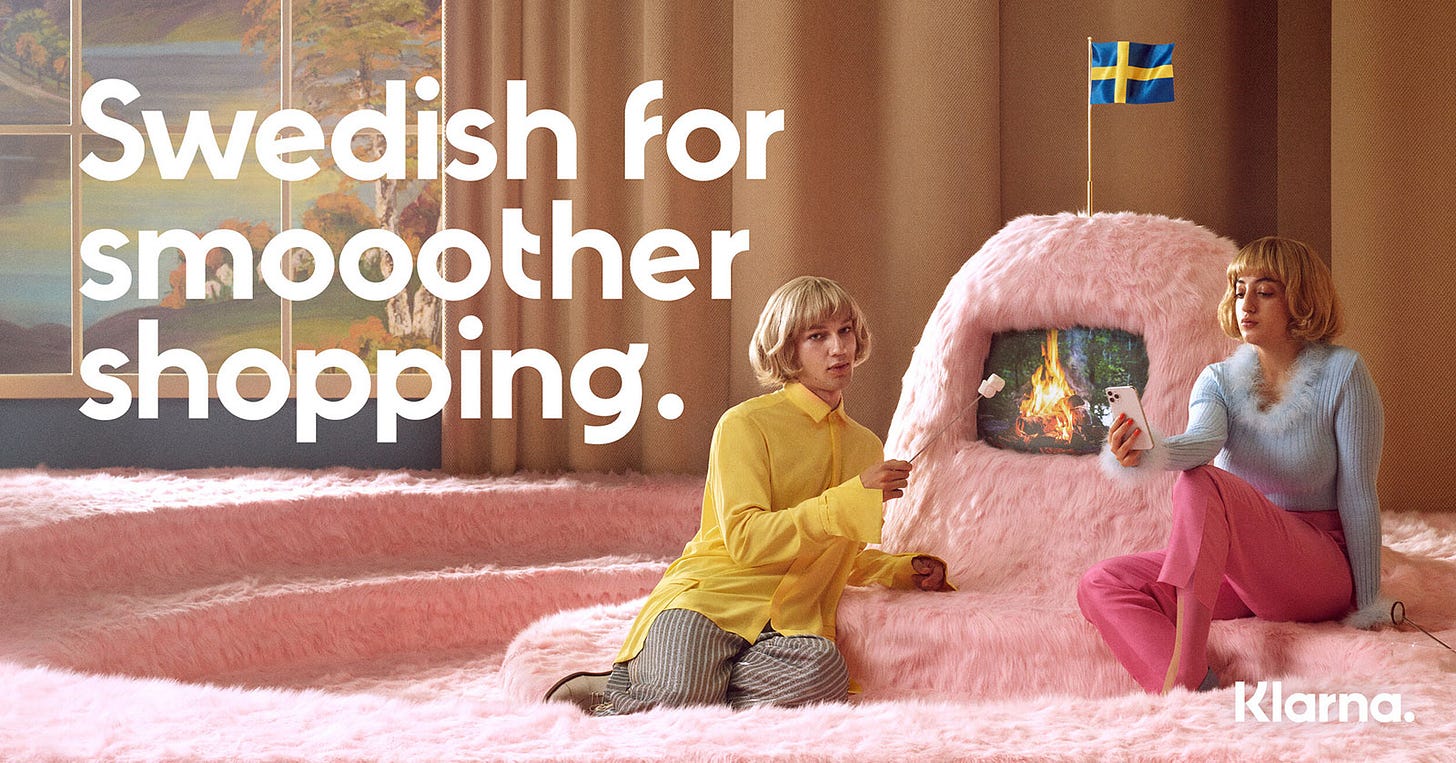
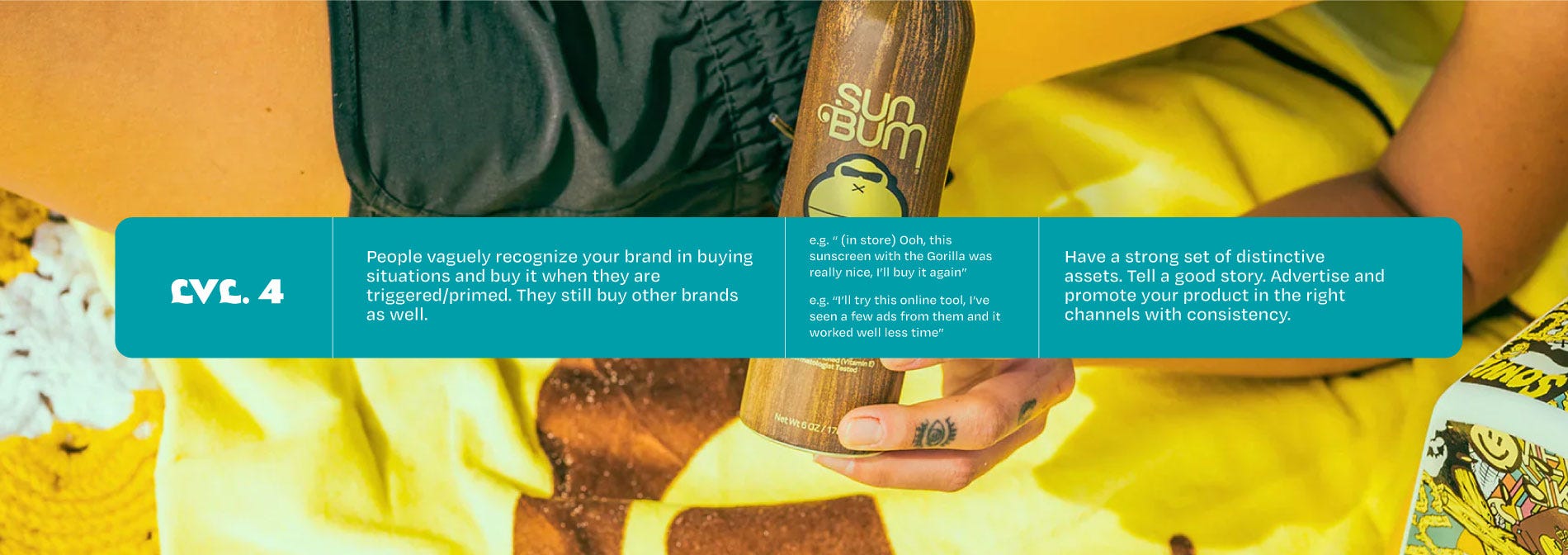
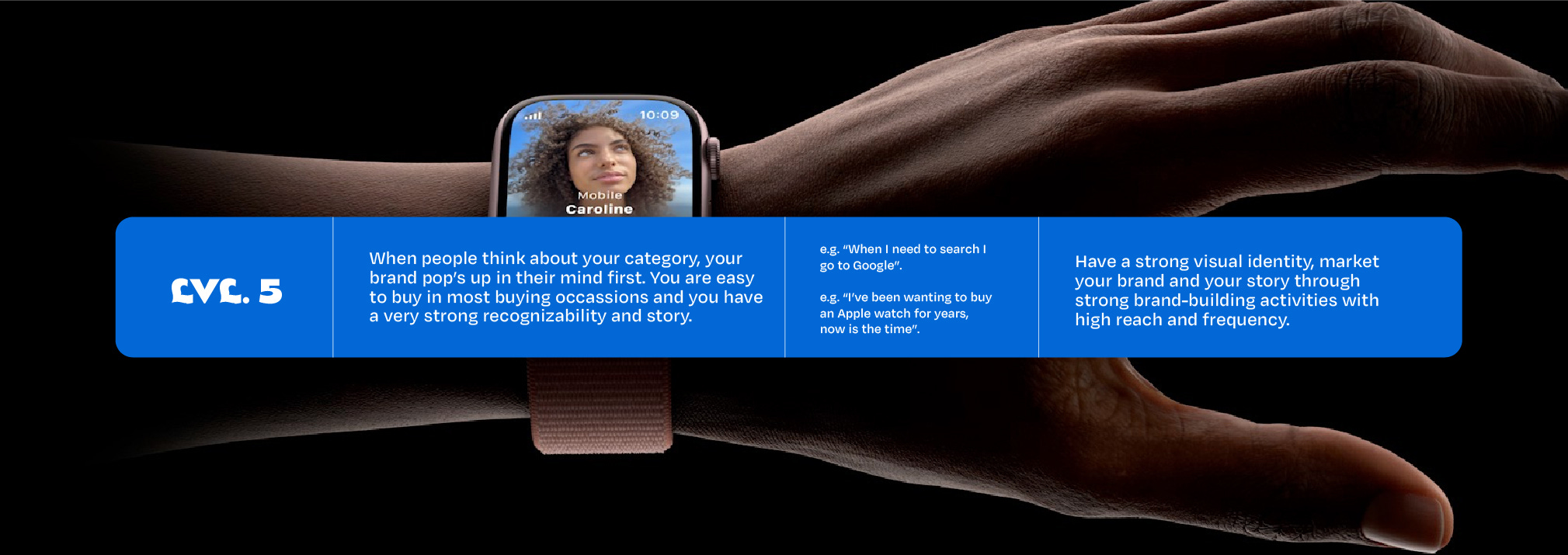
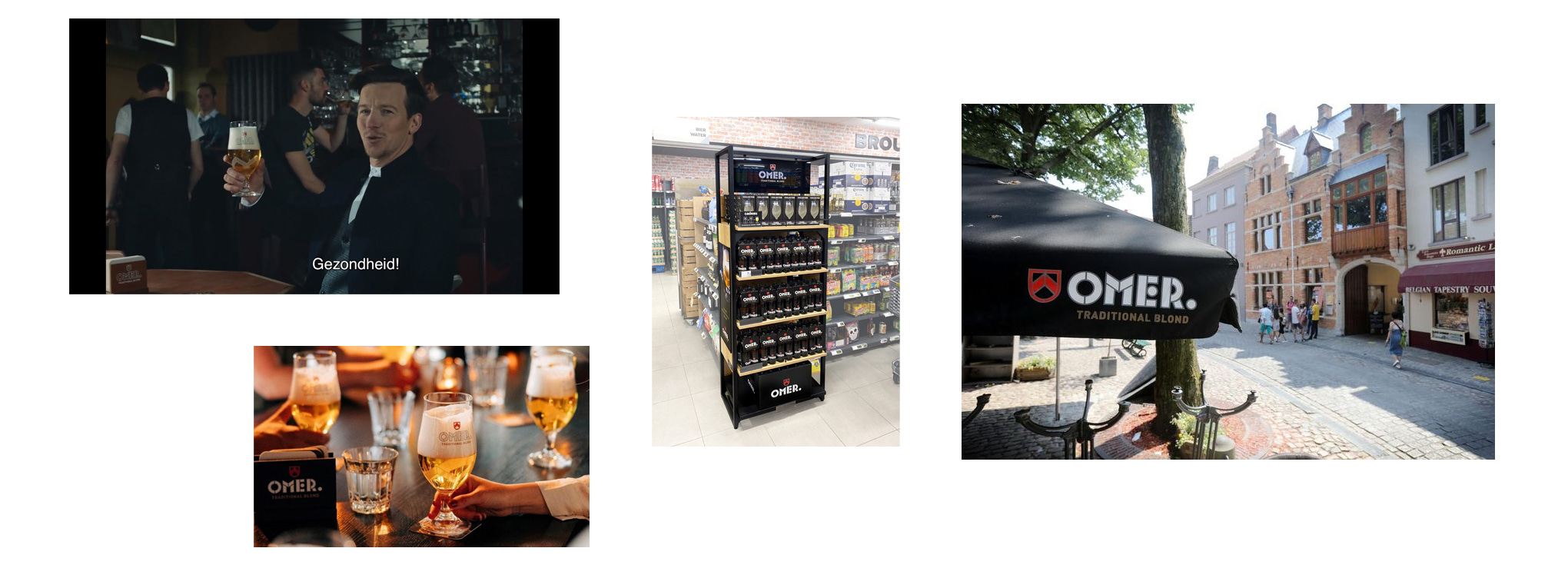
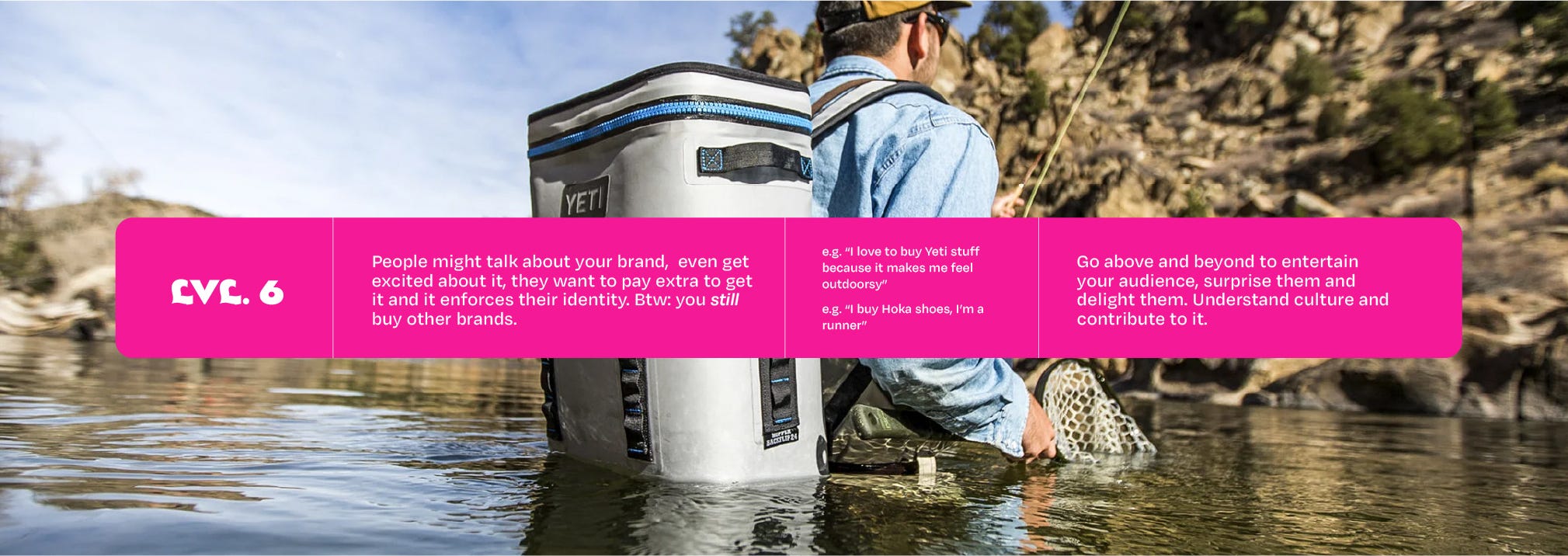
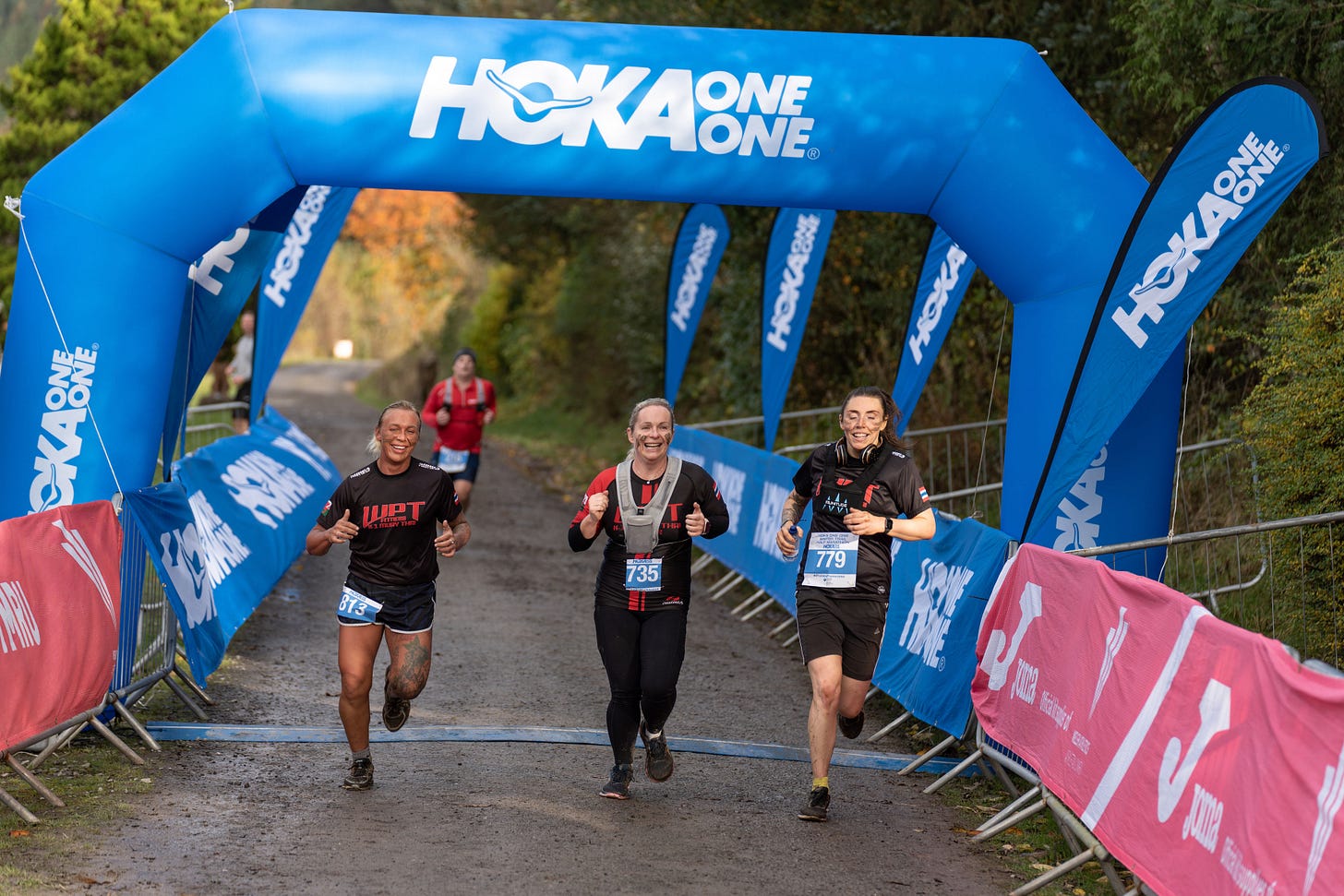
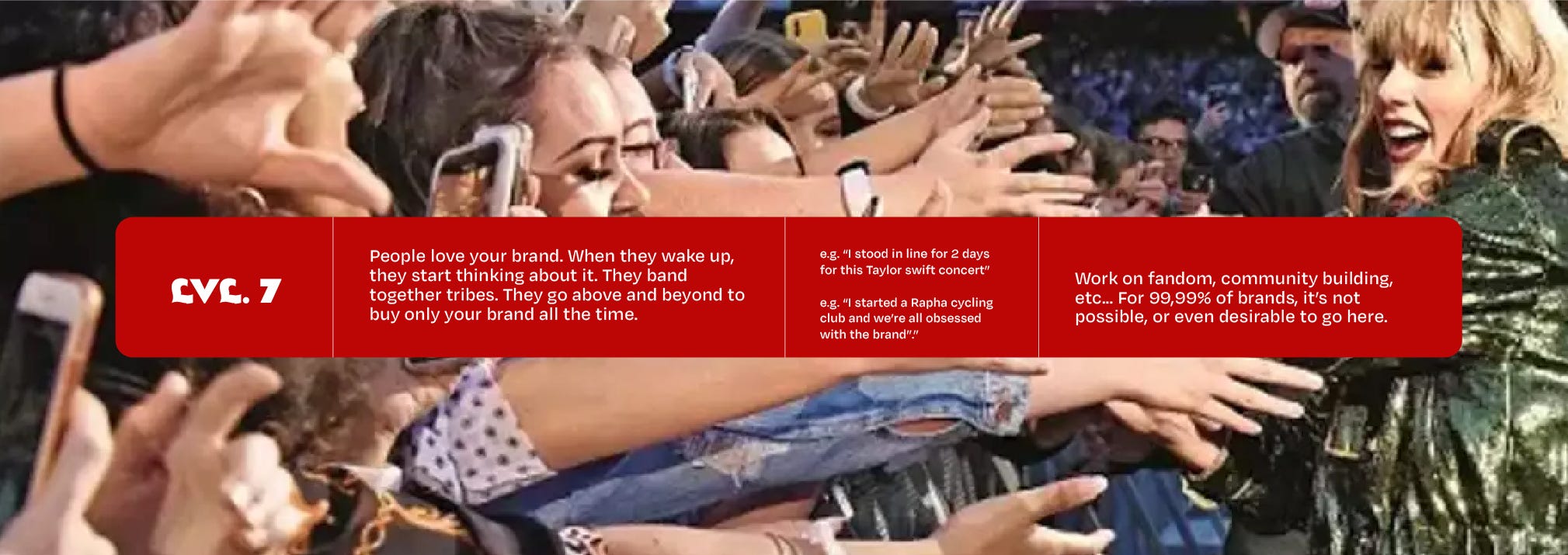

Which course are you covering your new understanding against your old ones. This is the most awesome article i have seen.
Is it harder for household commodities to make it past Level 4?
I’m thinking toilet paper, razors, hangers, etc.
But then things like soap and laundry detergent have loyalty to the product smell and feel.